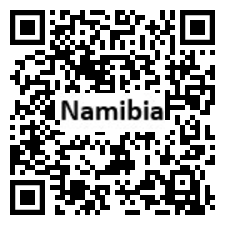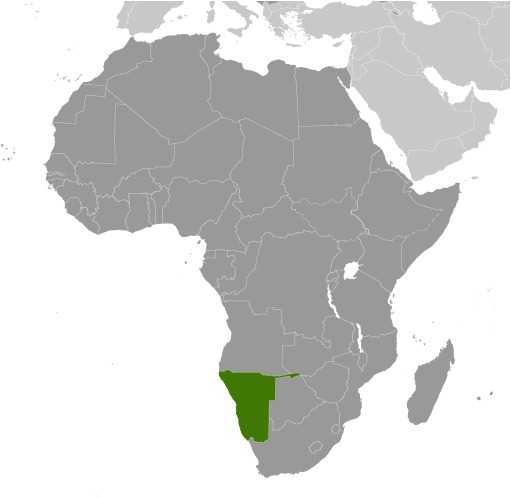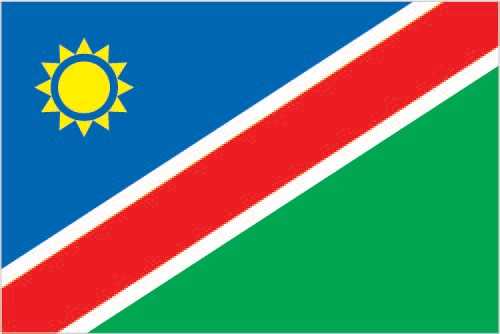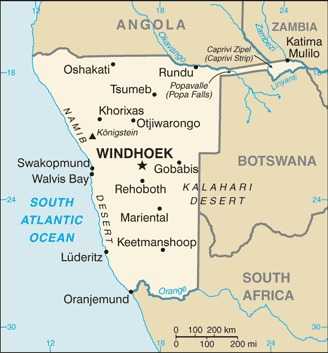Introduction
Background
South Africa occupied modern-day Namibia, then known as German South West Africa, in 1915 during World War I and administered it as a mandate until after World War II. In 1966, the Marxist South-West Africa People's Organization (SWAPO) guerrilla group launched a war of independence for the area that became Namibia. Namibia gained independence in 1990, and SWAPO has governed it since, though the party has dropped much of its Marxist ideology.
Geography
Area
total : 824,292 sq km
land: 823,290 sq km
water: 1,002 sq km
Climate
desert; hot, dry; rainfall sparse and erratic
Natural resources
diamonds, copper, uranium, gold, silver, lead, tin, lithium, cadmium, tungsten, zinc, salt, hydropower, fish
People and Society
Population
total: 2,803,660
Ethnic groups
Ovambo 50%, Kavangos 9%, Herero 7%, Damara 7%, mixed European and African ancestry 6.5%, European 6%, Nama 5%, Caprivian 4%, San 3%, Baster 2%, Tswana 0.5%
Languages
Oshiwambo languages 49.7%, Nama/Damara 11%, Kavango languages 10.4%, Afrikaans 9.4% (also a common language), Herero languages 9.2%, Zambezi languages 4.9%, English (official) 2.3%, other African languages 1.5%, other European languages 0.7%, other 1% (2016 est.)
Religions
Christian 97.5%, other 0.6% (includes Muslim, Baha'i, Jewish, Buddhist), unaffiliated 1.9% (2020 est.)
Population growth rate
1.72% (2024 est.)
Government
Government type
presidential republic
Capital
name: Windhoek
Executive branch
chief of state: Acting President Nangolo MBUMBA (since 4 February 2024)
head of government: Acting President Nangolo MBUMBA (since 4 February 2024)
Legislative branch
description: bicameral Parliament consists of:
National Council (42 seats); members indirectly elected 3 each by the 14 regional councils to serve 5-year terms); note - the Council primarily reviews legislation passed and referred by the National Assembly
National Assembly (104 seats; 96 members directly elected in multi-seat constituencies by closed list, proportional representation vote to serve 5-year terms and 8 nonvoting members appointed by the president)
Economy
Economic overview
upper middle-income, export-driven Sub-Saharan economy; natural resource rich; Walvis Bay port expansion for trade; high potential for renewable power generation and energy independence; major nature-based tourist locale; natural resource rich; shortage of skilled labor
Real GDP (purchasing power parity)
$29.944 billion (2023 est.)
$28.748 billion (2022 est.)
$27.288 billion (2021 est.)
Real GDP per capita
$11,500 (2023 est.)
$11,200 (2022 est.)
$10,800 (2021 est.)
Agricultural products
root vegetables, milk, maize, millet, grapes, beef, onions, wheat, fruits, pulses (2022)
Industries
mining, tourism, fishing, agriculture
Exports
$5.641 billion (2023 est.)
$5.314 billion (2022 est.)
$4.341 billion (2021 est.)
Exports - partners
South Africa 28%, Botswana 11%, China 10%, Zambia 5%, France 4% (2022)
Exports - commodities
diamonds, gold, fish, radioactive chemicals, ships (2022)
Imports
$8.281 billion (2023 est.)
$7.423 billion (2022 est.)
$6.467 billion (2021 est.)
Imports - partners
South Africa 41%, China 7%, Nigeria 5%, India 4%, UAE 4% (2022)
Imports - commodities
refined petroleum, ships, copper ore, trucks, electricity (2022)
Exchange rates
Namibian dollars (NAD) per US dollar -
Page last updated: Wednesday, July 24, 2024




